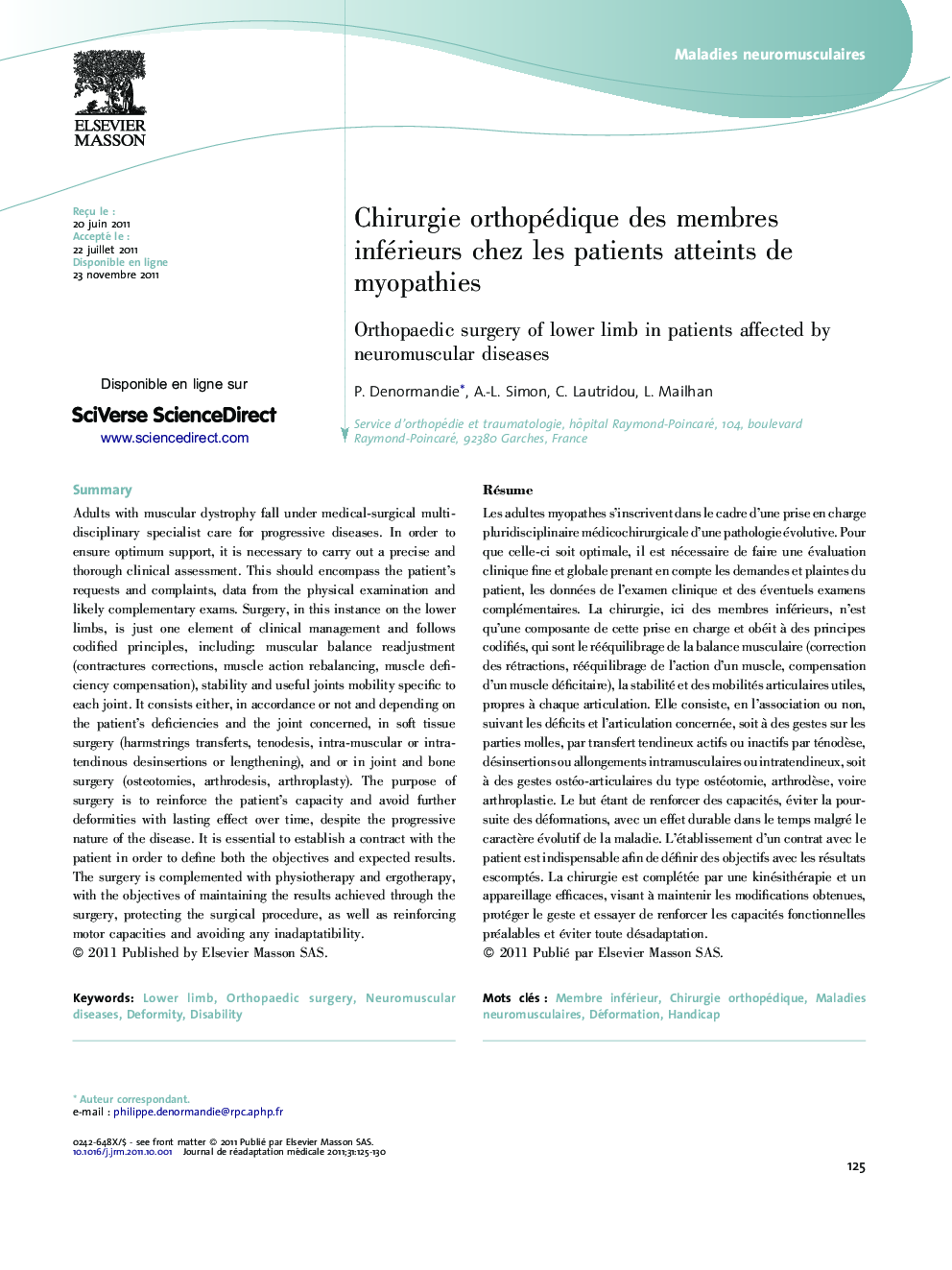| Article ID | Journal | Published Year | Pages | File Type |
|---|---|---|---|---|
| 2701051 | Journal de Réadaptation Médicale : Pratique et Formation en Médecine Physique et de Réadaptation | 2011 | 6 Pages |
Abstract
Adults with muscular dystrophy fall under medical-surgical multidisciplinary specialist care for progressive diseases. In order to ensure optimum support, it is necessary to carry out a precise and thorough clinical assessment. This should encompass the patient's requests and complaints, data from the physical examination and likely complementary exams. Surgery, in this instance on the lower limbs, is just one element of clinical management and follows codified principles, including: muscular balance readjustment (contractures corrections, muscle action rebalancing, muscle deficiency compensation), stability and useful joints mobility specific to each joint. It consists either, in accordance or not and depending on the patient's deficiencies and the joint concerned, in soft tissue surgery (harmstrings transferts, tenodesis, intra-muscular or intra-tendinous desinsertions or lengthening), and or in joint and bone surgery (osteotomies, arthrodesis, arthroplasty). The purpose of surgery is to reinforce the patient's capacity and avoid further deformities with lasting effect over time, despite the progressive nature of the disease. It is essential to establish a contract with the patient in order to define both the objectives and expected results. The surgery is complemented with physiotherapy and ergotherapy, with the objectives of maintaining the results achieved through the surgery, protecting the surgical procedure, as well as reinforcing motor capacities and avoiding any inadaptatibility.
Keywords
Related Topics
Health Sciences
Medicine and Dentistry
Orthopedics, Sports Medicine and Rehabilitation
Authors
P. Denormandie, A.-L. Simon, C. Lautridou, L. Mailhan,
